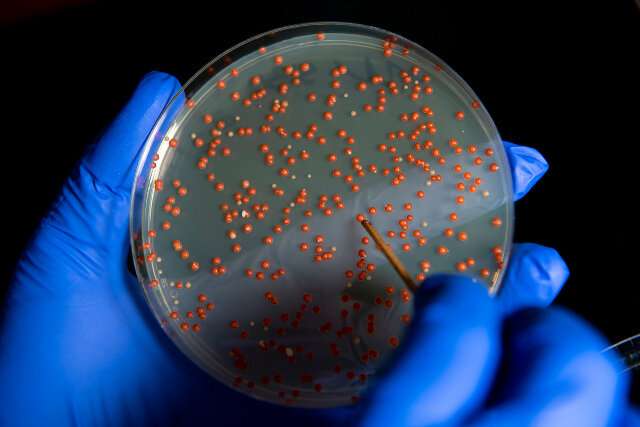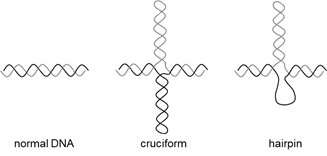Mapping the kinks in faulty DNA

Here is a challenge for you: copy letter-by-letter, word-for-word a document that is 1,200,000 pages long—that's a stack of paper higher than the Statue of Liberty. And don't make any typos or miss any punctuation.
Are you up to the task? Yes, you are: your body has been performing this task trillions of times since you were conceived, and you are doing it right now. What we are talking about, of course, is the replication of the human genome—that's some 25,000 protein-coding genes alone every time a cell divides.
The cells in our body have elaborate mechanisms to ensure that our life code is copied faithfully an astronomical number of times. Enzymes specifically designed to read, write, and copyedit the base pairs of guanine, cytosine, adenine, and thymine—which make up the double helix of DNA—work at a furious pace to ensure no errors occur during replication.
Although typically mistakes do occur about once every 1 billion "letters"—G, C, A, and T—that's usually not enough to cause a problem, and sometimes necessary to allow for adaptation of a species to changing environments.
A serious problem can occur, however, when abnormal DNA structures get in the way of the enzymes that copy DNA, creating roadblocks. These roadblocks are fragile breakpoints in the sequence, leading to susceptibility to cancer and other diseases.
This spring, Tufts professor and chair of biology Catherine Freudenreich and her colleagues identified the signature characteristics of these abnormal DNA structures and why they lead to fragility in the genome. While fragile regions of DNA have been known for some time, this study represents a first look at the molecular mechanism that causes the fragility.

"To date, roughly eighty common fragile sites have been identified in human DNA," said Freudenreich. "These regions of DNA are present in all humans and are normally stable, but they can break if cells are stressed while trying to duplicate their genetic material."
Chromosome breakage is often an early event in tumor progression. Freudenreich and Simran Kaushal, AG18, first author of the study that appeared in Cell Reports, examined one of those fragile sites, called FRA16D, to understand what causes it to be fragile and how it puts a wrench into the normal repair machinery. To make the study easier, they looked at the analogous DNA sequences in yeast rather than humans.
It turns out that a region of the fragile site contains a run of adenine and thymine bases repeated many times over, ATATATAT—and so on. When there is a run of about twenty or more of those repeats, the DNA can get a kink in it, making a cruciform or hairpin structure. That can cause the DNA replication machinery to derail, like a train flying off a buckled track.
Kaushal discovered that an enzyme repair crew arrives that contains several nucleases, including one called Mus81, which cuts the bent parts of the track. Other enzymes finish the repair, but the hairpin turns left by the Mus81 can make it difficult to do the job exactly right. Enzymes exist to fix the hairpins, but when the cell is stressed, they can't keep up—and errors accumulate.
"This result may explain why common fragile sites are so prone to accumulating deletions in cancer cells," said Freudenreich. "Not only do they break more, but once they break, they inhibit the repair process, resulting in loss of DNA sequence, or chromosome fragmentation. This is a new idea that will significantly impact perspective in the field."
"Identifying the enzymes—in addition to Mus81—responsible for the errors in DNA repair means we could have a better handle on possible means of cancer prevention," said Kaushal.
More information: Simran Kaushal et al. Sequence and Nuclease Requirements for Breakage and Healing of a Structure-Forming (AT)n Sequence within Fragile Site FRA16D, Cell Reports (2019). DOI: 10.1016/j.celrep.2019.03.103
Journal information: Cell Reports
Provided by Tufts University

















